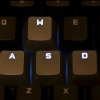I need education: RAID, backups, images
38 minutes ago, johnt said:and also. How would I be able to recover my information?
Say your PC has 2 drives in RAID1, 1 fails, you don't need to recover your information since the pool is still available, just degraded. At that point you replace the failed drive and it rebuilds.
38 minutes ago, johnt said:I also tested this with Windows Storage Spaces and the second PC would not let me touch the drives at all.
Did you move both drives? If so it should work. Moving only one would be importing a degraded array, not sure how that impacts it.
As mentioned RAID's only for availability precisely so you can continue to work uninterrupted if one drive fails, it's not a backup in any sense of the word.
The backup should be to a completely separate device, and usually not realtime but regular/scheduled unless it's also versioned. Can be an external drive with something like freefilesync for a file-based backup which it seems you want in this case, you usually only want images for an OS drive. For images Macrium Reflect is pretty good and can do incrementals, sadly they killed the free version recently.
I use urbackup for both, it's free but it's a client-server model.


.png.255947720031a641abdac78e663b681c.png)














Create an account or sign in to comment
You need to be a member in order to leave a comment
Create an account
Sign up for a new account in our community. It's easy!
Register a new accountSign in
Already have an account? Sign in here.
Sign In Now